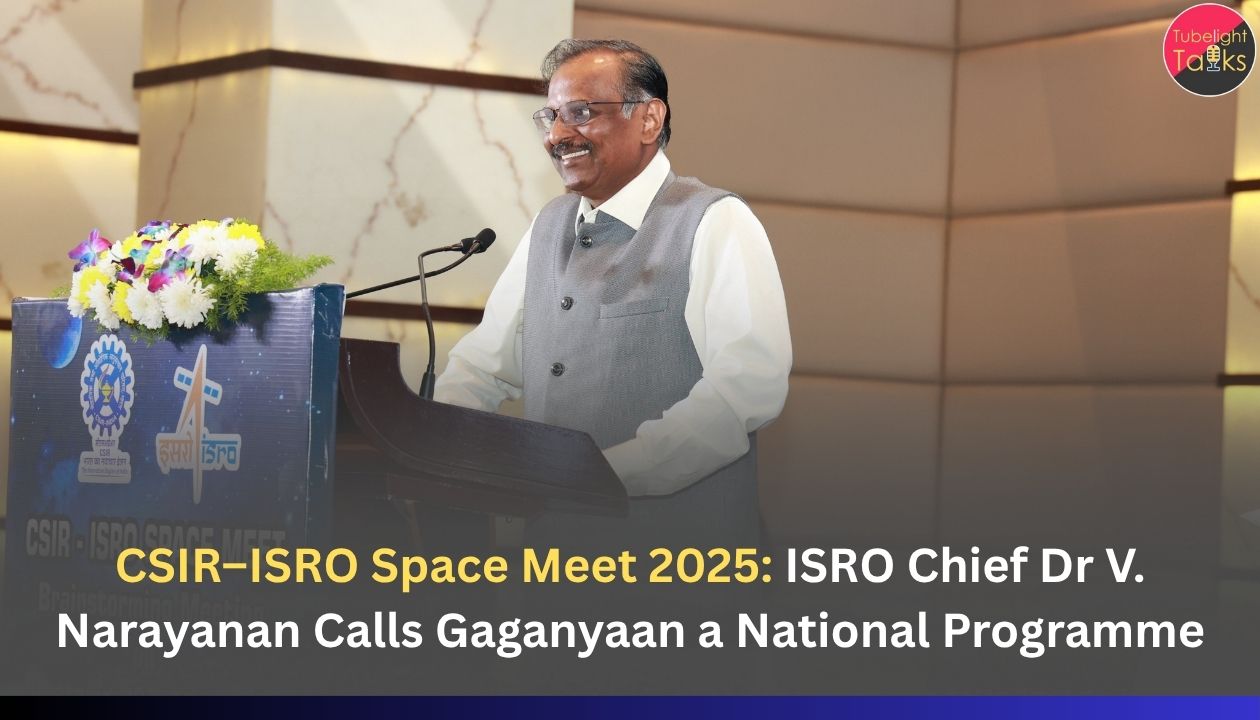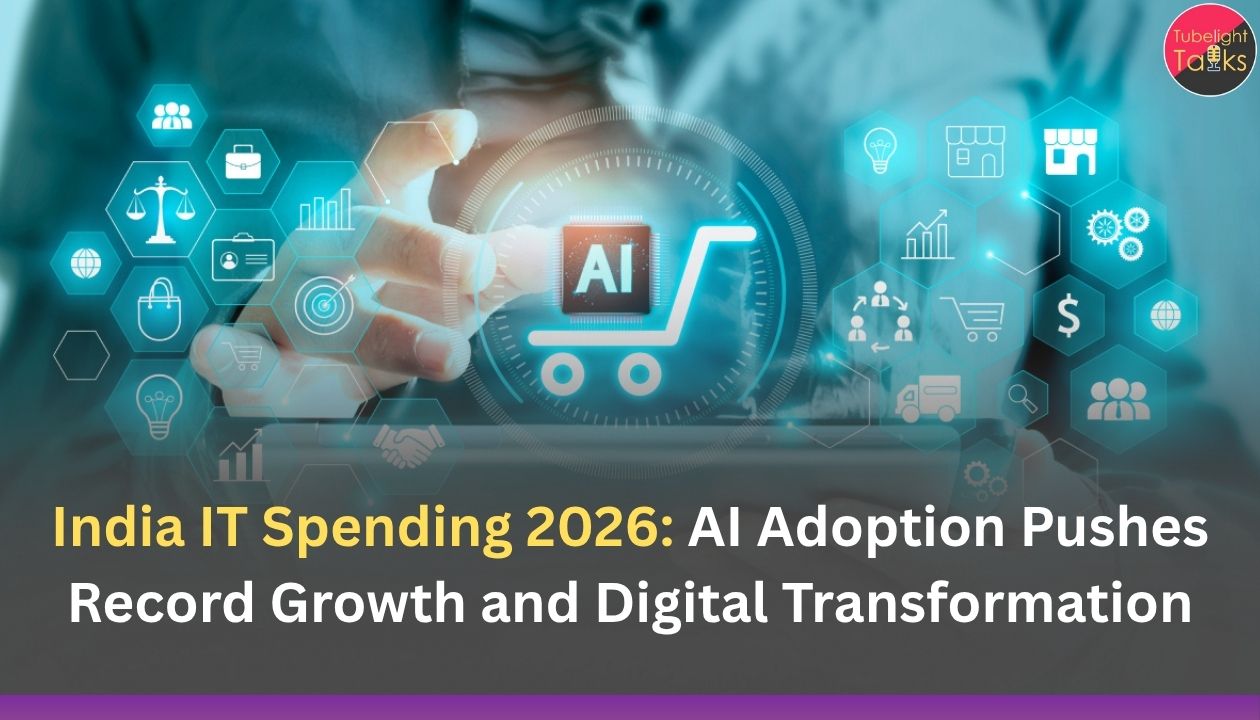India’s human spaceflight ambitions received a sharper strategic contour at the CSIR-ISRO Space Meet 2025, held on 17 November 2025 at Hotel Radisson Blu Atria, Bengaluru.
Delivering a comprehensive address, Dr V. Narayanan, Secretary, Department of Space & Chairman, ISRO, set the overarching direction for India’s journey from Gaganyaan to future crewed missions, stressing that the programme is “not solely an ISRO initiative but a national mission” anchored in coordinated efforts across ministries, CSIR laboratories, defence and biomedical research institutions, academia and industry partners.
He framed the Space Meet as a platform to align R&D ecosystems with ISRO’s mission roadmaps as India prepares to send its first cohort of Gaganyatris into space.
Event background: CSIR–ISRO Space Meet 2025
According to the Ministry of Science & Technology and CSIR, the CSIR–ISRO Space Meet 2025 was jointly organised by CSIR–NAL and ISRO to:
- Strengthen cooperation between CSIR’s multidisciplinary labs and ISRO’s mission teams,
- Advance human spaceflight research, microgravity science and space technology innovation,
- Explore areas like space medicine, life sciences, advanced materials, microfluidics, space food, plant growth in microgravity and environmental control systems.
The meet brought together 150–200 delegates, including scientists and technologists from CSIR, ISRO, DRDO, IISc and the Indian Air Force, as well as representatives of ESA, JAXA, CNES and other national and international organisations.
Gaganyaan as a national programme, not just an ISRO mission
In his address, Dr Narayanan emphasised that Gaganyaan, India’s first human spaceflight mission, must be understood as a national project:
- Multiple ministries and agencies—including science & technology, health, defence, civil aviation and education—are contributing to technologies such as crew training, space medicine, parachute and recovery systems, food and habitability solutions.
- CSIR labs, DRDO establishments and academic institutes are being aligned so that materials science, propulsion, biomedical instrumentation and environmental control research feed directly into mission design.
He underlined that this whole-of-nation approach is essential as India seeks to demonstrate reliable human spaceflight capability, move toward an Indian space station by 2035, and eventually prepare for a crewed lunar mission in the 2040 timeframe, as outlined earlier by the government.
Mission priorities: Crew safety, life-support and science payloads
Dr Narayanan outlined a set of evolving mission priorities for India’s human spaceflight roadmap:
- Next-generation crew safety systems
- Human-rating of the HLVM3 launcher,
- Robust crew escape and recovery systems, whose parachute and splashdown elements are now being validated through integrated air-drop tests.
- Human-rating of the HLVM3 launcher,
- Advanced life-support and habitability
- Development of indigenous Environmental Control and Life Support Systems (ECLSS) to maintain cabin atmosphere, temperature and humidity for multi-day missions,
- Space-qualified food systems, biomedical monitoring, and countermeasures against microgravity-induced health issues.
- Development of indigenous Environmental Control and Life Support Systems (ECLSS) to maintain cabin atmosphere, temperature and humidity for multi-day missions,
- Specialised scientific payloads
- Experiments in space biology, microgravity materials, fluidics, microbial behaviour and radiation effects,
- Translational research that connects orbital experiments to societal applications in health, agriculture, materials and climate resilience.
- Experiments in space biology, microgravity materials, fluidics, microbial behaviour and radiation effects,
He noted that these priorities are not static: they will evolve further as India moves from initial Gaganyaan flights to longer missions and an eventual Indian space station.
90% development work, three uncrewed tests
Linking the Space Meet to broader mission progress, Dr Narayanan recalled that:
- Nearly 90% of the development work for Gaganyaan has been completed,
- Three uncrewed missions are planned before India attempts a crewed flight,
- The first uncrewed mission will fly with the humanoid Vyommitra to rigorously test life support, environmental systems and re-entry profiles,
- The crewed mission timeframe of 2027 remains the target, with uncrewed flights shifting slightly but safety remaining non-negotiable.
He pointed out that each uncrewed mission will refine crew safety margins, subsystem reliability and operational procedures, and that CSIR and partner labs are expected to contribute heavily to data analysis and experiment design for these flights.
Role of CSIR labs and India’s wider R&D network
A central theme of Dr Narayanan’s address was the pivotal role of India’s R&D laboratories in making human spaceflight sustainable:
- CSIR laboratories contribute in areas like advanced alloys and composites, ceramic metamaterials, corrosion control, microfluidics, biosciences, medical diagnostics, environmental monitoring and food technologies.
- DRDO labs provide capabilities in parachute and recovery systems, protective gear, specialised food and life-support hardware for astronauts.
- Academic partners such as IISc and leading medical institutes underpin space medicine, human factors and cognitive performance studies.
He argued that this science–technology convergence—where fundamental research, translational engineering and mission operations are tightly coupled—is what will “strengthen the overall ecosystem required for human spaceflight” and position India as a reliable, self-reliant spacefaring nation.
Science–technology convergence and global partnerships
Dr Narayanan also stressed the importance of international collaboration, noting that India’s human spaceflight roadmap is unfolding in a world where:
- Agencies like ESA, JAXA and CNES are already leaders in microgravity research and life-support systems,
- Shared experiments, astronaut exchanges and joint technology projects can shorten India’s learning curve,
- India’s contributions—especially in cost-effective engineering and frugal, reliable systems—can strengthen global missions and future multilateral projects.
He framed inter-agency partnerships, sustained R&D collaborations and open scientific exchange as key drivers of India’s rise as a global space leader, not just through successful launches, but through enduring contributions to space science and technology.
Space leadership with humility and responsibility
From a Satgyan lens inspired by Sant Rampal Ji Maharaj, India’s expanding human spaceflight ambitions invite a deeper reflection beyond technology and prestige:
- Reaching orbit with human beings is a historic vijay, but Satgyan reminds that true progress requires vivek—discrimination between what merely glorifies ego and what genuinely serves humanity.
- Human spaceflight should ultimately enhance disaster response, climate understanding, medicine, communications and knowledge, not just national vanity.
- Large missions like Gaganyaan and future space stations involve billions of dollars of public money.
- Satgyan would nudge policymakers to continually ask: Are we maintaining justice towards the poorest—farmers, labourers, slum-dwellers—while funding such missions? A Dharmic nation must advance high science without neglecting basic needs.
Read Also: Small-Sat Boom: India’s Integration Capacity vs Global Backlog—Can We Catch Up?
FAQs: CSIR-ISRO Space Meet 2025
1. What is the CSIR–ISRO Space Meet 2025?
It is a joint CSIR–ISRO event in Bengaluru to deepen cooperation on human spaceflight, microgravity science and space technologies. The 2025 edition (17 November) brought together ~150–200 experts from CSIR labs, ISRO, DRDO, IISc, IAF and agencies like ESA, JAXA and CNES.
2. Who is Dr V. Narayanan and what is his role?
Dr V. Narayanan is a senior rocket scientist and currently Secretary, Department of Space & Chairman, ISRO (since January 2025). He now leads Gaganyaan, India’s planned space station by 2035, the crewed lunar mission by 2040 and overall efforts to grow India’s share in the global space market.
3. What did Dr Narayanan say about Gaganyaan’s status?
He said about 85–90% of Gaganyaan’s development work is complete. Three uncrewed missions—one carrying the humanoid Vyommitra—will precede the first crewed flight, targeted for 2027, to demonstrate a safe three-day mission in a 400 km orbit.
4. How are CSIR labs contributing to human spaceflight?
CSIR labs work on advanced materials and structures, microfluidics and biosciences, microbial corrosion control, space food, biomedical sensors, environmental monitoring and life-support–related R&D. These capabilities feed directly into ISRO’s needs for crew modules, life-support systems, space medicine and microgravity experiments.
5. Why is this Space Meet important for India’s global space leadership?
It aligns national R&D assets with key mission goals (Gaganyaan, space station, lunar mission), strengthens long-term ties with leading space agencies, and promotes science–technology convergence from lab to hardware and astronaut health. This helps India evolve from a launch provider into a full-spectrum human spaceflight nation with strong scientific output and collaborations.










